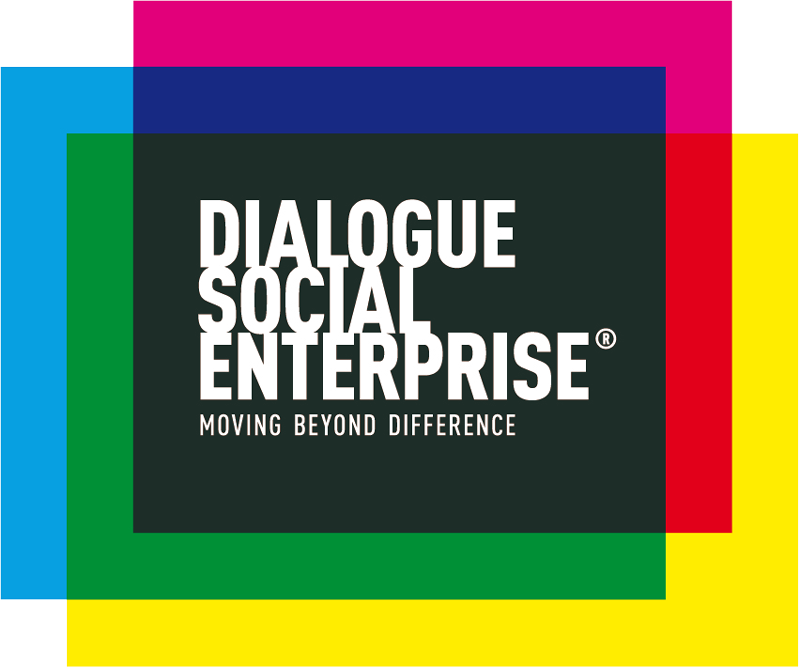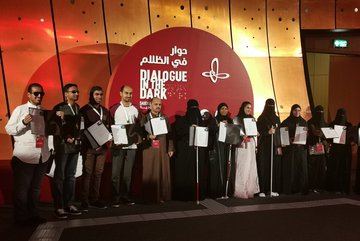"I came out of the darkness and couldn't stop thinking about the experience I had gone through. I sat for a long time, absorbed in my thoughts. I went over and over the experience in the darkness without images, but full of excitement. I felt the longing to share that experience. I had a dream to replicate “Dialogue in the Dark” in my community.”
The above lines are an abstract from what many current and former partners have told us about what they thought and felt during that moment that triggered their intention to replicate “Dialogue in the Dark” and that usually follows a visit to the exhibition.
For more than 30 years at DSE we have multiplied “Dialogue in the Dark”, an exhibition operated worldwide by partners who, after a brief period of consulting and training, manage each venue autonomously. Most of these partners have been people who do not live with any disability, and whose contact with people living with disabilities is limited to the encounter they had with their blind guide during their visit to “Dialogue in the Dark”.
How is it possible for someone with minimal contact with disability to start a project whose majority of employees have to be people with visual impairment?
The answer lies in the impact, which in our experience is the motor of inclusive projects.
In the case of our partners, on the one hand, there is the impact on visitors. They have received more than 10 million visitors over 30 years in their exhibitions, the vast majority of whom end the experience with an impact and awareness. And of those thousands of visitors, there are bound to be some who remain absorbed for a long time, thinking about what they have just experienced, and who feel the call to impact their communities as well.
On the other hand, there is the impact on the staff with visual disability. This one is difficult to measure until our partners get involved in the recruitment and training. It is then when they get an understanding for the reality of these people living with disability, who have generally lived in conditions of social and labor marginalization, and who in their exhibition receive an opportunity to generate economic income, impact society and dignify themselves through work.
This impact is sustained and lasts as long as the exhibition has its doors open. Every day there are demonstrations of gratitude and enthusiasm from visitors who take the tour. Every day the professionalism of the staff with disabilities grows, as does their engagement and passion for a more inclusive society.
And the impact persists even when exhibitions close. We usually get contacted by persons interested on becoming partners or experiencing again a DiD event because they visited venues which closed years ago. Also guides with disability years after they stopped working for DiD still value a lot that job opportunity.
And for us as consultants, it is remarkable how that seed of inclusion germinates, grows and flourishes. Partners have become experts and the first committed to the mission of cultivating more inclusive societies. Even without our intervention, the large network of partners is robust and achieves the greatest impact.
And we believe this recipe can be implemented in any organization that wants to build and sustain an inclusive culture in these 4 steps.
Clarify your inclusion message: what is it that you are urging to tell your community through your inclusion initiative? In the case of our partners, the message has many forms, but it boils down to the fact that a world without images is still a rich and humane world where we are all equal.
Inclusive from birth: make sure your initiative is inclusive from the start: with them and not for them! No partner is surprised when we inform them that our exhibit must be operated by visually impaired staff. Partners have met at least one blind guide, and their ability is so clear to them that no one doubts that they are the experts.
Get into the reality of the underrepresented groups: How can you get in touch with the reality of the groups included in your organization? In the case of our partners, this happens when they get to know the candidates with visual disability during recruitment, and then when they live closely with the new guides during training. There is NO other way to understand and co-create inclusive rules of living together than to work and spend time together.
Don't lose sight of impact: How can you constantly feel the impact your initiatives create and share it with sponsors to sustain inclusive efforts? In the case of our partners, they just have to listen to the stories of the staff with disabilities about how working changes their lives or stop by the exhibit and talk to visitors who come out of the dark to be motivated anew by their comments.
Based on our experience of more than 30 years creating jobs for people with visual disability through local “Dialogue in the Dark” partners who were mostly unaware of the disability issue, we are convinced that inclusion is rooted in our empathy and kindness. Most of us like to be kind, because we make an impact that allows us to give meaning to our work. however, we usually work and live in systems that don't give us the space to express our natural empathy and kindness. That is why the essence of our “Dialogue in the Dark” consultancy has been to create a work environment that is inclusive from birth, that the heart of the project is a message of impact for everyone involved, and that impact is always there, emanating from visitors, employees, and partners, that it is easy for everyone to perceive and that everyone is motivated and finds meaning in it.

